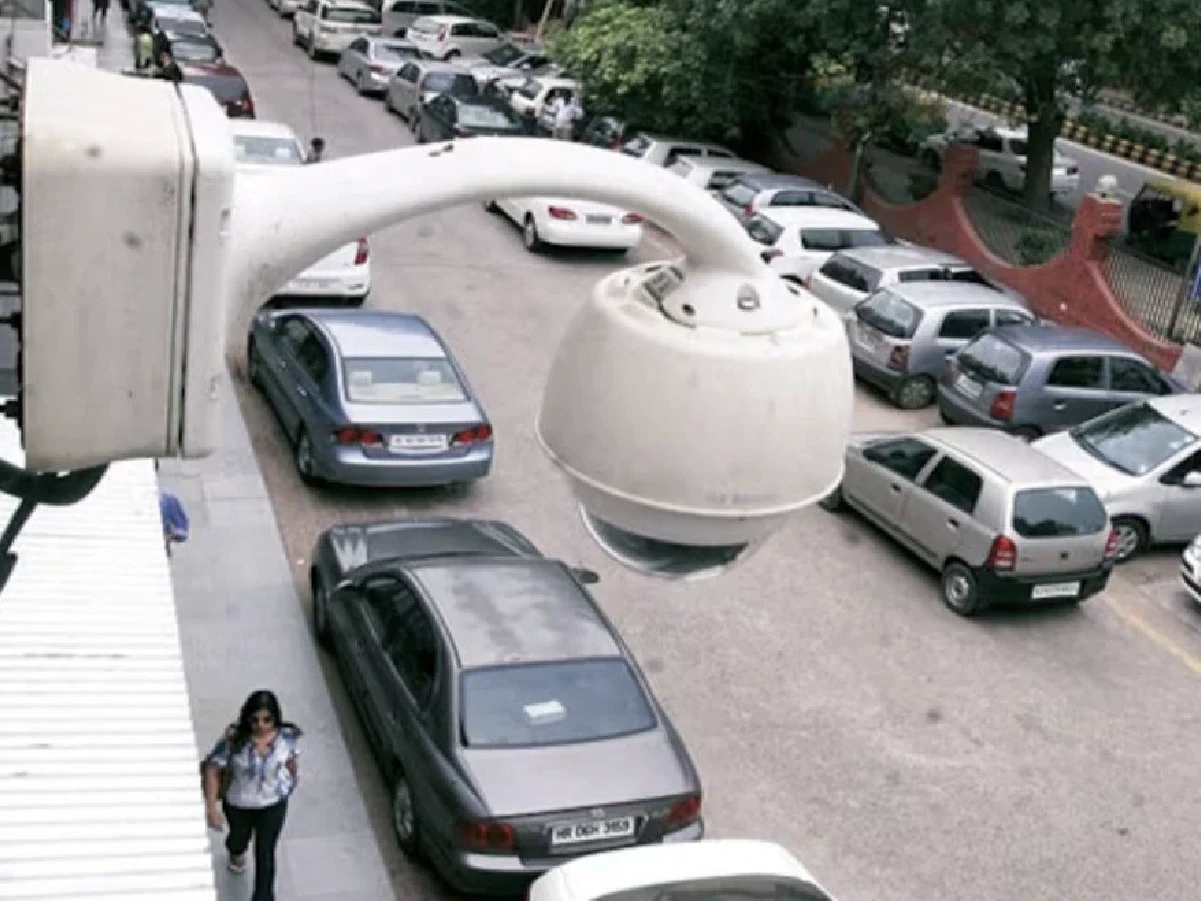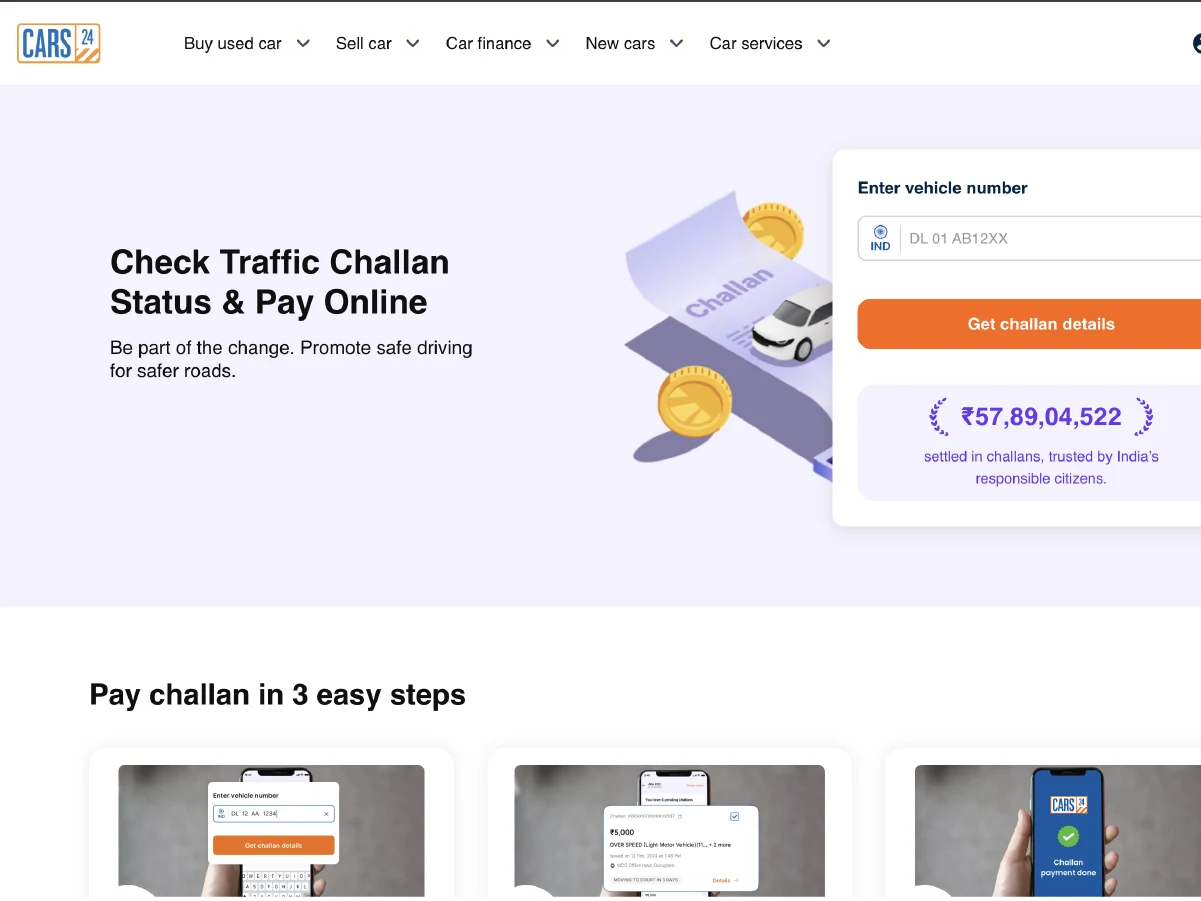

Why Fancy Number Plates Make It Hard for AI Cameras to Catch Traffic Violations?
- 1AI cameras miss fancy plates, but manual checks ensure violators get caught
- 2CMVR sets plate font, size & colour; breaking rules may cost you up to ₹5,000
- 3The safest way to avoid challans is to stick with a legal, RTO-approved plate
AI-powered traffic enforcement is changing how violations are caught in India. Cities are investing heavily in AI smart camera systems that automatically detect speeding, red-light jumping, and wrong-lane driving, all by reading a vehicle’s number plate in seconds. But there’s one detail that can throw even the smartest system off its game: a customised or “fancy” number plate.
While these plates might look stylish, they often break the strict size, font, and colour standards laid down by the Motor Vehicles Act. Automated Number Plate Recognition (ANPR) software inside these AI cameras is trained to read standard-format plates with machine-level accuracy. Change the font, add reflective vinyl, or space the digits creatively, and the system can misread or completely miss the number.
It is a loophole that some motorists use to beat the detection. However, with the increase in enforcement, this trick can land the driver in serious trouble. In this guide, we will take a closer look at how AI smart cameras read plates, how fancy designs confuse them, and why this hack could backfire sooner than you think.
How AI Smart Cameras Read Your Plate?

Every AI smart camera has a high resolution lens with an algorithm that reads your number plate frame by frame. In ideal circumstances, the system can pick up:
- Plate colour and contrast: White plates with black letters (private) and yellow plates with black letters (commercial) offer the best clarity.
- Standard font and size: India’s Motor Vehicle Rules prescribe a specific typeface and spacing to reduce reading errors.
- Character positioning: Letters and numbers must be aligned properly so the AI can separate them for database matching.
The challenge? Fancy plates disregard these rules. Altering the contrast, squeezing the spacing, or painting it with reflective paint and glare, shadows, or even motion blur can trick the recognition software.
Why Do Fancy Number Plates Cause Missed Violations?
In case the camera fails to lock onto the plate, the offense, be it speeding, red light, or blocking a pedestrian, might never be tagged to the corresponding vehicle. This is why sometimes you will come across videos of cars zooming past a light without a fine in their name, while someone else gets fined for something as small as edging over the stop line.
However, there’s a catch: authorities are well aware of this trick. Traffic police in several states are now manually flagging unclear plates and issuing separate fines for plate violations, which can be heavier than the original offence. So, using a fancy plate to dodge an AI smart camera is a short-term gamble which can lead to long-term trouble.
Real-World Crackdown on Fancy Plates
Traffic police in cities such as Delhi, Bengaluru and Hyderabad have started maintaining a special watch list of vehicles with unreadable number plates. It is not only flagged by AI smart cameras, but officers on the ground are trained to pull over the vehicles or note their registration manually.
For example:
- In Bengaluru, multiple challans have been issued for “defective number plates” where fonts were too small, too stylised, or painted in reflective material.
- In Delhi, police have used mobile ANPR units that take multiple angle shots, making it harder for fancy plates to hide from detection.
- In Pune, repeat offenders have even had their registration suspended until the plate was replaced with a standard one.
So, in areas where AI is falling short, human follow-ups and secondary camera angles are filling in the gaps.
The Legal Side: What the Rules Actually Say?
As per the Central Motor Vehicle Rules, an Indian number plate must be displayed as follows:
- Font type: Simple, non-stylised, and in capital letters.
- Font size: 65 mm height for cars (front and rear), 45 mm for two-wheelers.
- Colour code: Black on white for private vehicles, black on yellow for commercial, white on green for EVs.
- No extra symbols: Logos, stickers, or personal text are banned unless issued by the RTO.
If your plate breaks any of these rules, traffic police can fine you up to ₹5,000 and that’s before we even talk about any violation you committed that the AI smart camera may have missed.
Can You Still Be Caught With a Fancy Plate?
Absolutely. Modern traffic systems don’t rely solely on one camera angle. In many cases, if an AI reading fails, the footage is sent for manual review. This means an officer can match the vehicle make, model, and partial plate numbers to identify the offender.
In addition, plate recognition software is getting better at recognising stylised fonts and ignoring glare, with future AI upgrades planned in 2025. A plate that can evade the monitoring system today may get flagged in an instant tomorrow.
Ways to Check If You’ve Been Fined

Even if you’ve been using a fancy number plate, you might already have pending fines you didn’t know about. The quickest way to be sure is to check traffic challan online. Enter your registration number, and you’ll see if the system has picked up any violations linked to your vehicle. Doing so is advisable before you go on to assume that you’ve “beaten the cameras.”
Summary
Yes, a fancy plate can make life harder for an AI smart camera, but that’s a loophole that may land you in deeper trouble. Traffic enforcement now uses a combination of AI, manual reviews, and stricter on-road checks, meaning you’re just as likely to get caught. And with plate violation fines being steep, the style statement may not be worth the risk.
In short, it is much better to stay on the right side of the law and a standard plate will keep both you and your RTO happy.
Frequently Asked Questions
Expand all





























